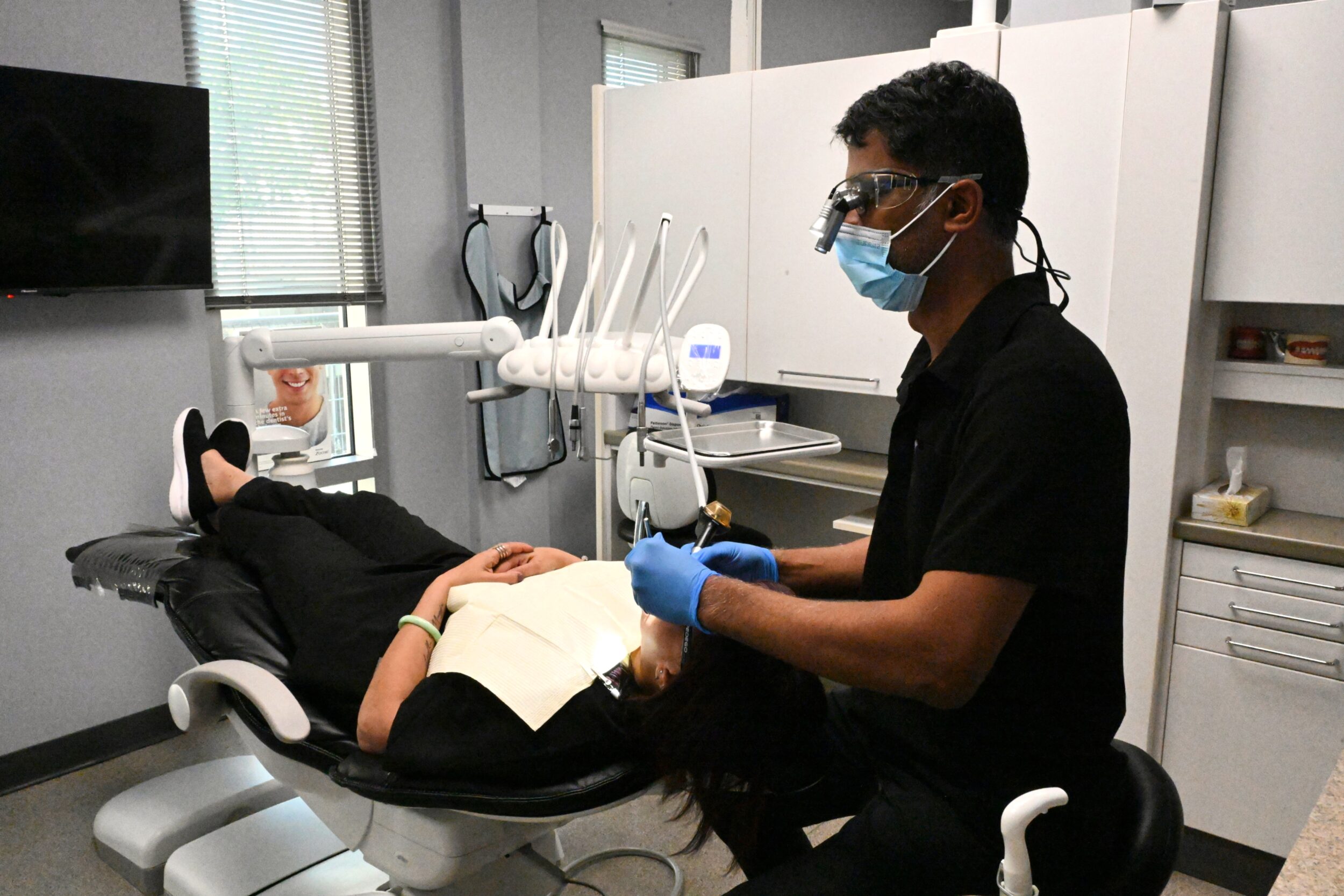What is a Malocclusion in Calgary, AB
The term malocclusion refers to an incorrect relationship between the maxilla (upper arch) and the mandible (lower arch), or to an overall misalignment of the teeth. A malocclusion is such a common condition that most individuals experience one, to some degree, at some point in their lives. In most cases, poor oral habits and genetic influences play a significant role in the development of disaligned teeth.
An orthodontist is typically required to treat moderate malocclusions. Dentists who specialize in the treatment of malocclusions as well as other facial irregularities are called orthodontic dentists.

There are three main types of malocclusions that can be classified as follows:
- Class I – Although the occlusion is typical, there are problems with spacing or overcrowding with the remaining teeth.
- Class II – A malocclusion occurs when the upper teeth are positioned further forward than the lower teeth. Therefore, the anterior teeth may protrude or the lateral teeth may overlap the central teeth.
- Class III – Prognathism (also known as “underbite”) is a condition in which the lower teeth are positioned further forward than the upper teeth. There is usually an underbite when the jawbone is large or there is a short maxillary bone when there is a large jawbone.
Malocclusions are treated for a variety of reasons
When a severe malocclusion occurs, there may be skeletal disharmony in the lower face due to the malocclusion. An orthodontist may work in conjunction with a maxillofacial dentist in order to reconstruct the jaw in a more extreme case. Malocclusions can be treated at any time. The results of orthodontic realignment procedures have been delighted with by adults and children alike.
The following are some reasons to seek orthodontic treatment:
- The risk of tooth decay is reduced
An uneven wear pattern on the teeth is often caused by a malocclusion. It is possible for the constant wearing of the same teeth to result in tooth erosion and decay. - Improved oral hygiene
Overcrowding can result in a malocclusion. If there are too many teeth competing for a limited amount of space, it can be difficult to clean the teeth and gums effectively. Cleaning straight teeth that have been properly aligned is much easier than cleaning teeth that are not straight. - Reduction of the risk of TMJ disorders
It is believed that temporomandibular jaw syndrome (TMJ) is caused by a malocclusion. In addition to headaches and facial pains, grinding teeth during sleep is also caused by excessive pressure on the temporomandibular joint. The realignment of the teeth relieves pressure and eliminates these symptoms.
What's the best way to treat a malocclusion?
Dental braces usually fix malocclusions. An orthodontist takes panoramic x-rays, conducts a visual examination, and takes bite impressions before determining the best course of treatment. A malocclusion caused by overcrowding may require an extraction by the orthodontist in order to create enough space for realignment. Underbite, crossbite, and overbite, on the other hand, can be treated with several different orthodontic appliances, including:
- Fixed multibracket braces
Dental braces of this type are composed of brackets that are cemented to each tooth and an archwire that connects them. Wires are adjusted or changed regularly by the orthodontist to align the teeth properly. - Removable devices
There are a number of non-fixed dental braces available for the treatment of malocclusions. Among the most common appliances are retainers, headgear, and palate expanders. The purpose of retainers is to hold the teeth in the correct position while the jawbone develops properly around them. - Invisalign®
It is important to note that these dental aligners are removable and are invisible to the naked eye. Unlike fixed dental braces, Invisalign does not affect the aesthetics of the smile. Invisalign® isn’t for everyone.
Whenever you have questions regarding malocclusions, please do not hesitate to contact us.